It's Showtime! LED Cinema Screens Are Coming to Theaters
Just as people are cautiously returning to live movie theaters, some of those theaters are starting to install new LED digital screens. Unlike traditional movie theater technology that relies on projecting images onto a blank screen, LED cinema screens function like other electronic displays where the images are generated by illuminated elements of the screen itself.
Cinema Projector Technology Evolution
The first movie projectors were invented in the 1890s using film technology. Movie images were captured with a camera in multiple sequential frames on film. The film was developed, and then a projector shone light through the frames in rapid succession to cast moving images on a screen in front of the viewers.
To distribute and show feature-length movies, multiple large reels of film had to be shipped to each theater, where a projectionist had to run the system live, switching reels as needed throughout the film’s length. Fast forward one hundred years, and by the late 1990s many movie theaters were replacing film projectors with digital projectors.
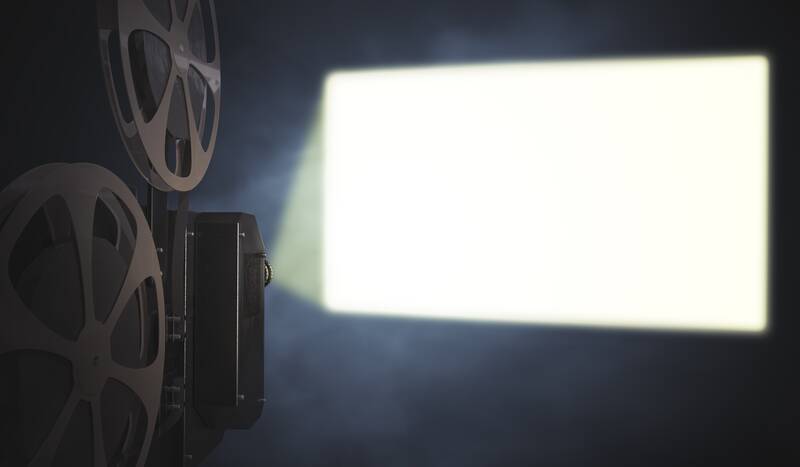
Throughout much of the 20th Century movie theaters relied on film projectors.
Digital projection technology enabled movie studios to distribute films electronically, with entire movies stored on a computer. In recent decades, different digital projection technologies have been used. One technology is an LCD projector which “uses a liquid crystal display panel for each color of the video signal—red, green, and blue. The LCD panels control the light and the display of the image. Another type of computer projector is a digital light processing (DLP) projector, which uses microscopically small mirrors configured on a microchip.”1
Liquid-crystal on silicon (LCoS) projectors combine these technologies by placing a liquid-crystal display over a reflective layer of silicon. “This filtered and shaped light is then passed through a series of lenses that magnify and focus the image for projection.”2 A cathode ray tube (CRT) projector uses small separate picture tubes to process the video signal, which is then focused with a lens.
What all these technologies have in common is their reliance on a white light source that must be filtered (through colored filters or LCD panels, for example) to display the colors of the movie images. Since 2015, laser projectors have come into use. Typically, they include three lasers, one each in red, green, and blue, that create the images, eliminating the need for a white light source and resulting in more energy efficient image projection.3
The Rise of LED Cinema Screens
In 2017, Samsung introduced the first LED cinema screen, the Onyx, representing a completely new approach to digital cinema viewing. Built more like the display industry’s large-scale screens used for digital signage and television, LED cinema screens are made of multiple individual, high-resolution LED panels tiled together. This modular approach enables larger screen sizes—at 14 meters wide (46.2 feet), the Onyx is 1.4 times larger than a typical movie screen—in response to audience demand for bigger, more vivid, and engrossing moviegoing experiences.
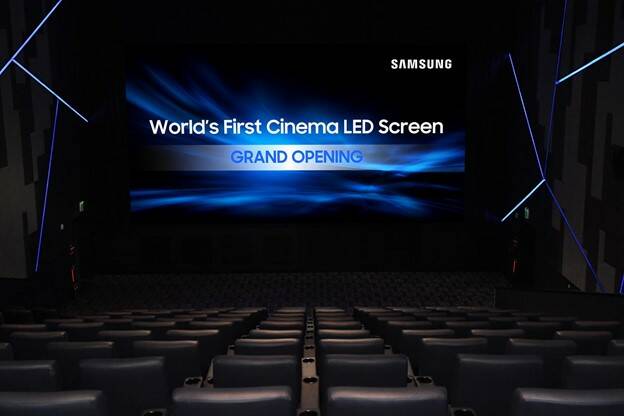
Samsung’s Onyx, the first LED cinema screen, installed 2019 in Swagath Cinemas in Bengaluru, India. (Image ©Samsung, Source)
As consumers have grown used to high-resolution, high-quality images on their large-format televisions and the immersion of virtual reality, expectations have risen for movie visuals as well. To lure people away from streaming options, movie theaters must provide a more exciting, higher-quality big-screen viewing experience. LED cinema screens offer high-end specifications such as 4K resolution, HDR, and brightness levels up to 6X that of standard projector technologies,4 along with the more vivid colors and sharper contrast offered by all LED-based displays.
While LED screens require movie theaters to invest in new display installations, they don’t require a projection booth. This enables theaters to expand seating areas to generate more revenue, compensating for the cost of the technology upgrade. LED screens are also more energy efficient to operate than projectors, lowering electricity expenses.
The initial LED screen installations were featured at theaters in Asia (e.g., Korea, China, India) and have since expanded to other locations worldwide, from Australia to Switzerland. Display makers Samsung, LG, Sony, Unilumin, Barco and others are entering the product category. Industry analysts are predicting that one in eight mainstream movie theater screens globally will be converted to LED digital format by the end of 2023,5 with North America expected to become the largest market.
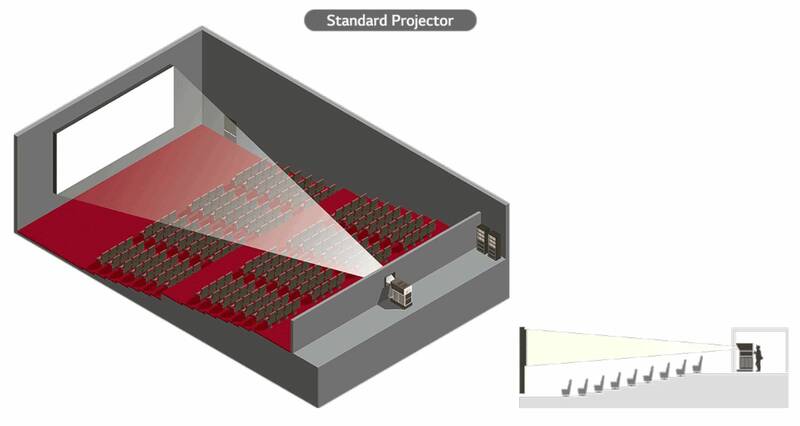
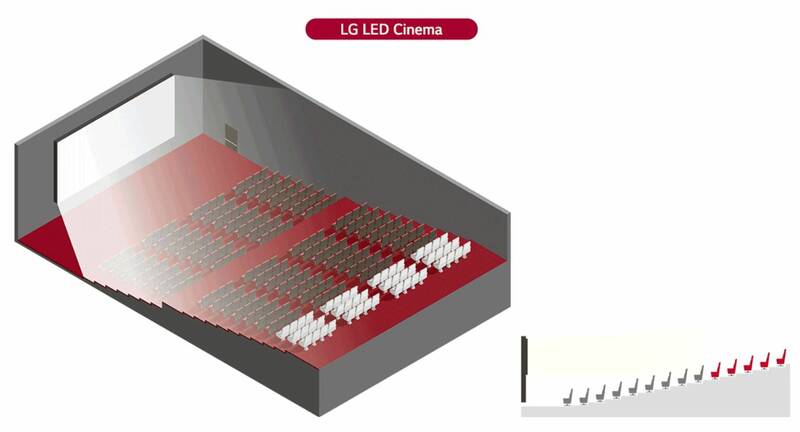
Illustration of a theater using standard projection technology (top) compared to LED digital screen technology (bottom) that opens up more space for customer seating. (Images: Source)
Ensuring Display Quality
When video content is being projected at larger-than-life sizes, defects and issues in display quality can be glaringly obvious. With theaters investing hundreds of thousands in the latest LED displays, and customers paying an average of $9-15 per movie ticket in the U.S., ensuring a flawless viewing experience is important. Displays must be quality-inspected to ensure consistent color and brightness of the pixels in each screen panel, and from panel to panel across the entire cinema display. Differences in color as small as 2 nanometers in wavelength and 3% in brightness are easily noticeable.
Variability in brightness and performance is inherent in LEDs; with millions of LED pixels used on large screens (for example the Onyx has 160,000 pixels per m2), clearly noticeable variations are almost impossible to avoid, even with very careful and expensive LED binning. This difficulty is magnified because LED performance will vary as a function of temperature and humidity, and so differences can occur from day-to-day even on the same LED production line.
Big-Screen LED Display Inspection Solution
Radiant has been providing solutions to measure and correct LED displays for almost as long as the technology has been on the market. ProMetric® Imaging Photometers and Colorimeters closely match human visual perception of light and color to ensure the performance of display screens—of any size. Our VisionCAL® LED Screen Correction System is an advanced solution for automated color and brightness correction of large LED screens (such as stadium screens, digital billboards, and cinema screens) in a controlled factory environment or in the field.
The VisionCAL solution measures the color and brightness of every LED in an LED module or screen. Based on this measurement, the application software then computes optimal correction coefficients for each LED and LED screen pixel. When these correction coefficients are applied to an incoming video signal the result is a screen with uniform brightness and color performance, with a specified color gamut that allows predictable color representation. The overall viewing experience is enhanced because the display is uniform and colors are accurate.
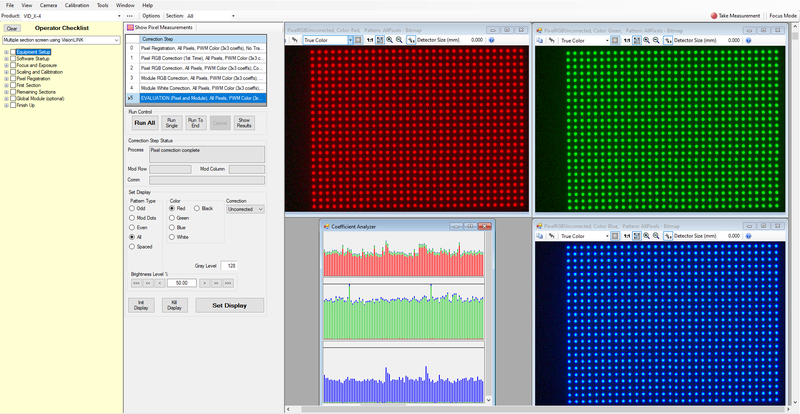
Pixel-level measurements are captured by a high-resolution ProMetric Imaging Colorimeter, then VisionCAL Software outputs illuminance, chromaticity, and correction coefficients for each LED pixel to achieve uniformity for red, green, blue, and white within LED modules.
CITATIONS
- Learn More About Projectors, Engineering 360. (Retrieved 7/8/2021)
- Matthes, J., “How Laser Projectors Work.” The Home Theater DIY. (Retrieved 7/8/2021)
- Ibid.
- Haynes, D., “LED Screens Starting to See Adoption by Cinema.” Sixteen:Nine, December 10, 2018.
- LEDInside 2020 Global LED Video Wall Market Outlook – Meeting Room, Sales Channel and Price Trend, LEDInside Market Intelligence Newsletter. (Retrieved 7/8/2021)
Join Mailing List
Stay up to date on our latest products, blog content, and events.
Join our Mailing List
